Complete Solutions to EXERCISE of chapter VISUALISING SOLID SHAPES of Class 8 book with complete answers and questions
| Class 8 | MATHS |
| Chapter | VISUALISING SOLID SHAPES |
| NCERT EXEMPLAR | EXERCISE |
| Number Of Questions | 91 |
| Academic Year | 2023-24 |
Which amongst the following is not a polyhedron?
View SolutionWhich of the following will not form a polyhedron?
View SolutionWhich of the following is a regular polyhedron?
View SolutionWhich of the following is a two Dimensional figure?
View SolutionWhich of the following can be the base of a pyramid?
View SolutionWhich of the following 3D shapes does not have a vertex?
View SolutionSolid having only line segments as its edges is a
View SolutionIn a solid if F = V = 5, then the number of edges in this shape is
View SolutionWhich of the following is the top view of the given shape?
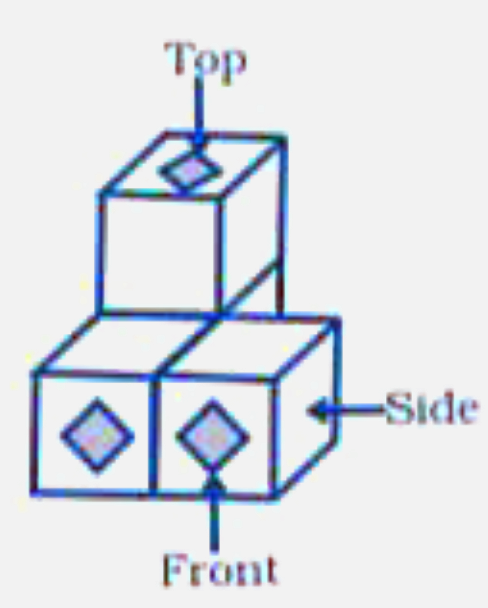
View SolutionThe net shown below can be folded into the shape of a cube. The face marked with the letter L is opposite to the face marked with which letter?
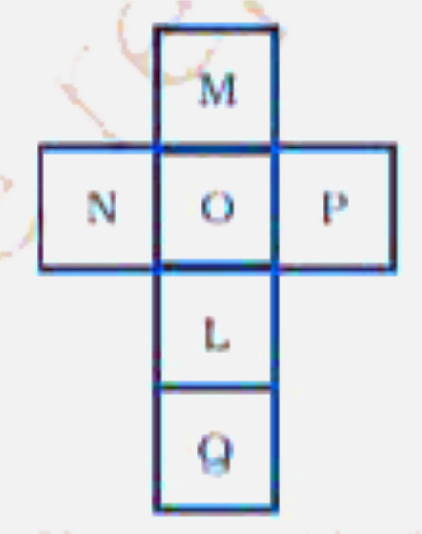
View SolutionWhich of the nets given below will generate a cone?

View SolutionWhich of the following is not a prism?
View SolutionWe have 4 congruent equilateral triangles. What do we need more to make a pyramid?
View SolutionSide of a square garden is 30 m. If the scale used to draw its picture is 1cm: 5m, the perimeter of the square in the picture is
View SolutionWhich of the following shapes has a vertex.
View SolutionWhich of the following cannot be true for a polyhedron?
View SolutionIn a blueprint of a room, an architect has shown the height of the room as 33 cm. If the actual height of the room is 330 cm, then the scale used by her is
View SolutionThe following is the map of a town. Based on it answer question 19-21.
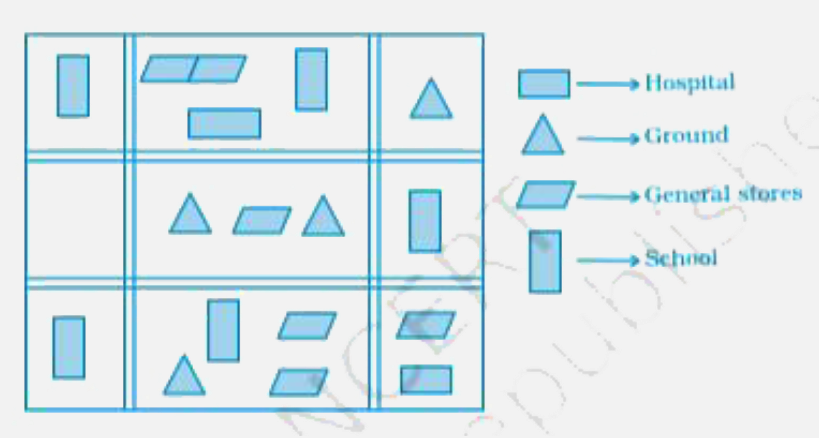
The number of hospitals in the town is
View SolutionThe ratio of the number of general stores and that of the ground is
View SolutionAccording to the map, the number of schools in the town is
View SolutionSquare prism is also called a _______.
View SolutionRectangular prism is also called a ________.
View SolutionIn the figure

the number of faces meeting at B is ________.
View SolutionA pyramid on an n sided polygon has ______ faces.
View SolutionIf a solid shape has 12 faces and 20 vertices, then the number of edges in this solid is ______.
View SolutionThe given net
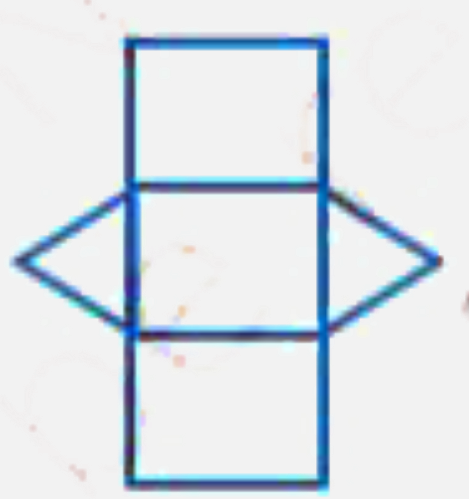
can be folded to make a ______.
View SolutionA solid figure with only 1 vertex is a ______.
View SolutionTotal number of faces in a pyramid which has eight edges is______.
View SolutionThe net of a rectangular prism has ______ rectangles.
View SolutionIn a three-dimensional shape, diagonal is a line segment that joins two vertices that do not lie on the ______ face.
View SolutionIf 4 km on a map is represented by 1 cm, then 16 km is represented by ______ cm.
View SolutionIf actual distance between two places A and B is 110 km and it is represented on a map by 25 mm. Then the scale used is ______.
View SolutionA pentagonal prism has ______ faces
View SolutionIf a pyramid has a hexagonal base, then the number of vertices is ______.
View Solution
View SolutionThe number of cubes in

are ______.
View SolutionIf the sum of number of vertices and faces in a polyhedron is 14, then the number of edges in that shape is ______.
View SolutionTotal number of regular polyhedra is ______.
View SolutionA regular polyhedron is a solid made up of ______ faces.
View SolutionFor each of the following solids, identify the front, side and top views and write it in the space provided


View SolutionThe other name of cuboid is tetrahedron.
View SolutionA polyhedron can have 3 faces.
View SolutionState whether the following statements are True or False. A polyhedron with least number of faces is known as a triangular pyramid.
View SolutionRegular octahedron has 8 congruent faces which are isosceles triangles
View SolutionPentagonal prism has 5 pentagons.
View SolutionEvery cylinder has 2 opposite faces as congruent circles, so it is also a prism.
View SolutionEuler’s formula is true for all three-dimensional shapes.
View SolutionA polyhedron can have 10 faces, 20 edges and 15 vertices.
View SolutionTrue (T) or false (F)
The top view of
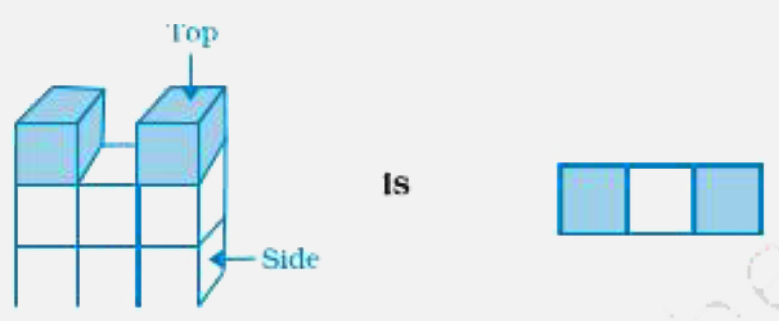
View SolutionThe number of edges in a parallelogram is 4. (True/False)
View SolutionEvery solid shape has a unique net.
View SolutionPyramids do not have a diagonal.
View SolutionThe given shape is a cylinder.
View SolutionA cuboid has atleast 4 diagonals. (True/False)
View SolutionAll cubes are prisms.
View SolutionA cylinder is a 3-D shape having two circular faces of different radii.
View SolutionOn the basis of the given figure, the length of a rectangle in the net of a cylinder is same as circumference of circles in its net.

View SolutionIf a length of 100 m is represented on a map by 1 cm, then the actual distance corresponding to 2 cm is ________.
View SolutionThe model of a ship shown is of height 3.5 cm. The actual height of the ship is 210 cm if the scale chosen is 1: 60.
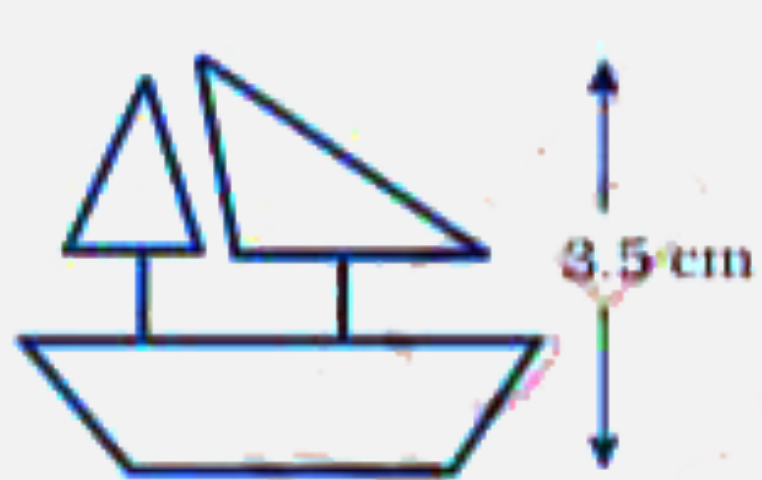
View SolutionThe actual width of a store room is 280 cm. If the scale chosen to make its drawing is 1:7, then the width of the room in the drawing will be ______.
View SolutionHow many faces does each of the following solids, have?
Tetrahedron
Hexahedron
Octagonal Pyramid
Octahedron
View SolutionDraw a prism with its base as regular hexagon with one of its face facing you. Now draw the top view, front view and side view of this solid.
View SolutionHow many vertices does each of the following solids have?
(a) cone
(b) Cylinder
(c ) Sphere
(e) Tetrhedron
(f) Hexagonal Prism
View SolutionHow many edges does each of following solids have?
(a) Cone
(b) Cylinder
(c) Sphere
(d) Octagonal Pyramid
(e) Hexagonal Prism (f) Kaleidoscope
View SolutionUsing Euler’s formula, find the value of unknown x, y, z, p, q, r, in the following table.

View SolutionCan a polyhedron have V = F = 9 and E = 16 ? If yes, draw its figure
View SolutionCheck whether a polyhedron can have V = 12, E = 6 and F = 8.
View SolutionA polyhedron has 60 edges and 40 vertices. Find the number of its faces.
View SolutionA polyhedron has 20 faces and 12 vertices. Find the edges of the polyhedron.
View SolutionA solid has forty faces and, sixty edges. Find the number of vertices of the solid.
View SolutionDraw the net of a regular hexahedron with side 3 cm. (Hint: Regular hexahedron - cube)
View SolutionDraw the net of a regular tetrahedron with side 6 cm.
View SolutionDraw the net of the following cuboid:
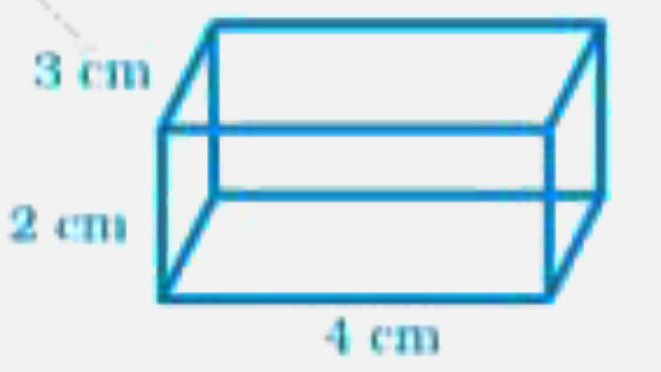
View SolutionMatch the following:
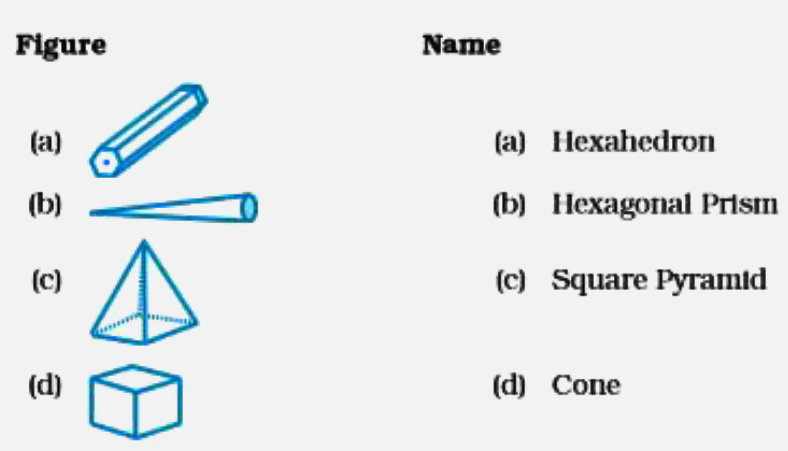
View SolutionComplete the table given below by putting tick mark across the respective property found in the solids mentioned.
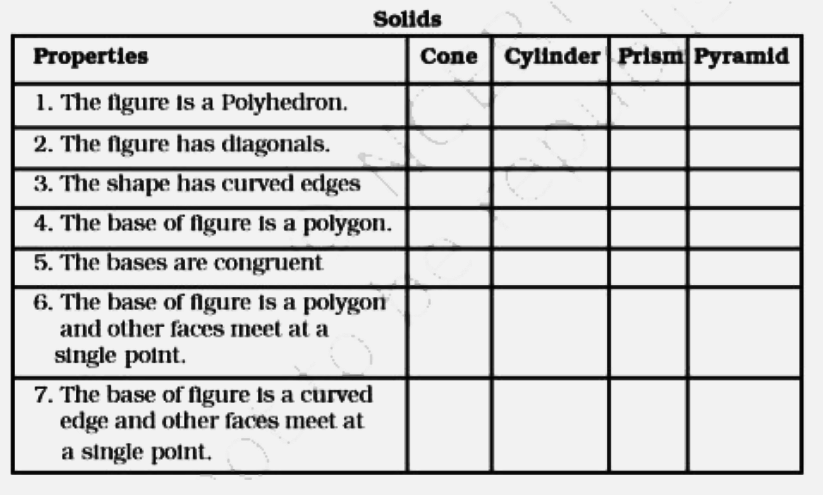
View SolutionDraw the net of the following shape.

View SolutionDraw the net of the following solid.
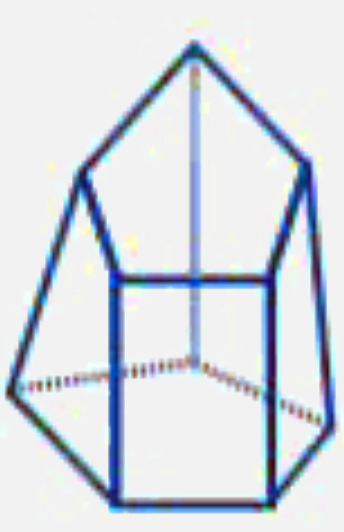
View SolutionFind the number of cubes in the base layer of the following figure.

View SolutionIn the above figure, if only the shaded cubes are visible from the top, draw the base layer.
View SolutionHow many faces, edges and vertices does a pyramid have with n sided polygon as its base?
View SolutionDraw a figure that represents your mathematics textbook. What is the name of this figure? Is it a prism?
View SolutionIn the given figures, identify the different shapes involved.
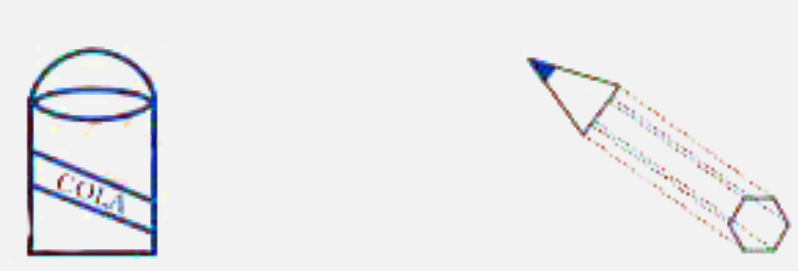
View SolutionThe edge of a cube is decreasing at the rate of 0.04 cm/sec. If the edge of cube is 10 cm, then the rate of decrease of its surface area is
View SolutionDraw a map of your school playground. Mark all necessary places like 2 library, Playground, Medical Room, Classrooms, Assembly area, etc.
View SolutionA photographer uses a computer program to enlarge a photograph. What is the scale according to which the width has enlarged?
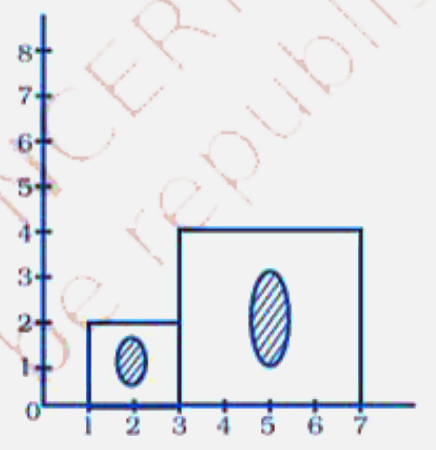
View SolutionThe side of a square board is 50 cm. A student has to draw its image in her notebook. If the drawing of the square board in the notebook has perimeter of 40 cm, then by which scale the figure has been drawn?
View SolutionThe distance between school and house of a girl is given by 5 cm in a picture, using the scale 1 cm : 5 km. Find the actual distance between the two places?
View SolutionUse a ruler to measure the distance in cm between the places joined by dotted lines. If the map has been drawn using the scale 1 cm :10 km, find the actual distances between
(1) School and Library
(2) College and Complex
(3) House and School
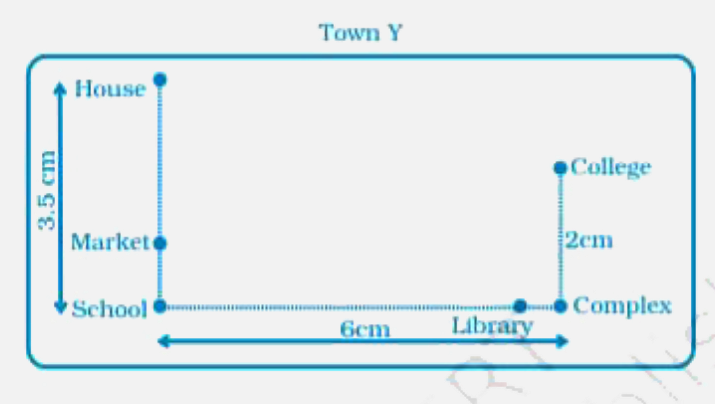
View SolutionThe actual length of a painting was 2 m. What is its length in the photograph if the scale used is 1 mm : 20 cm.
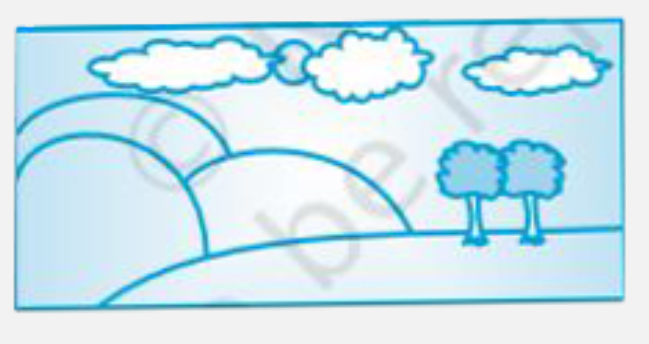
View SolutionFind the scale.
(a) Actual size 12 m Drawing size 3 cm
(b) Actual size 45 feet Drawing size 5 inches
View SolutionIn a town, an ice cream parlour has displayed an ice cream sculpture of height 360 cm. The parlour claims that these ice creams and the sculpture are in the scale 1:30. What is the height of the ice creams served?
View Solution
EXERCISE questions and complete solutions for chapter VISUALISING SOLID SHAPES of NCERT EXEMPLAR of Class 8